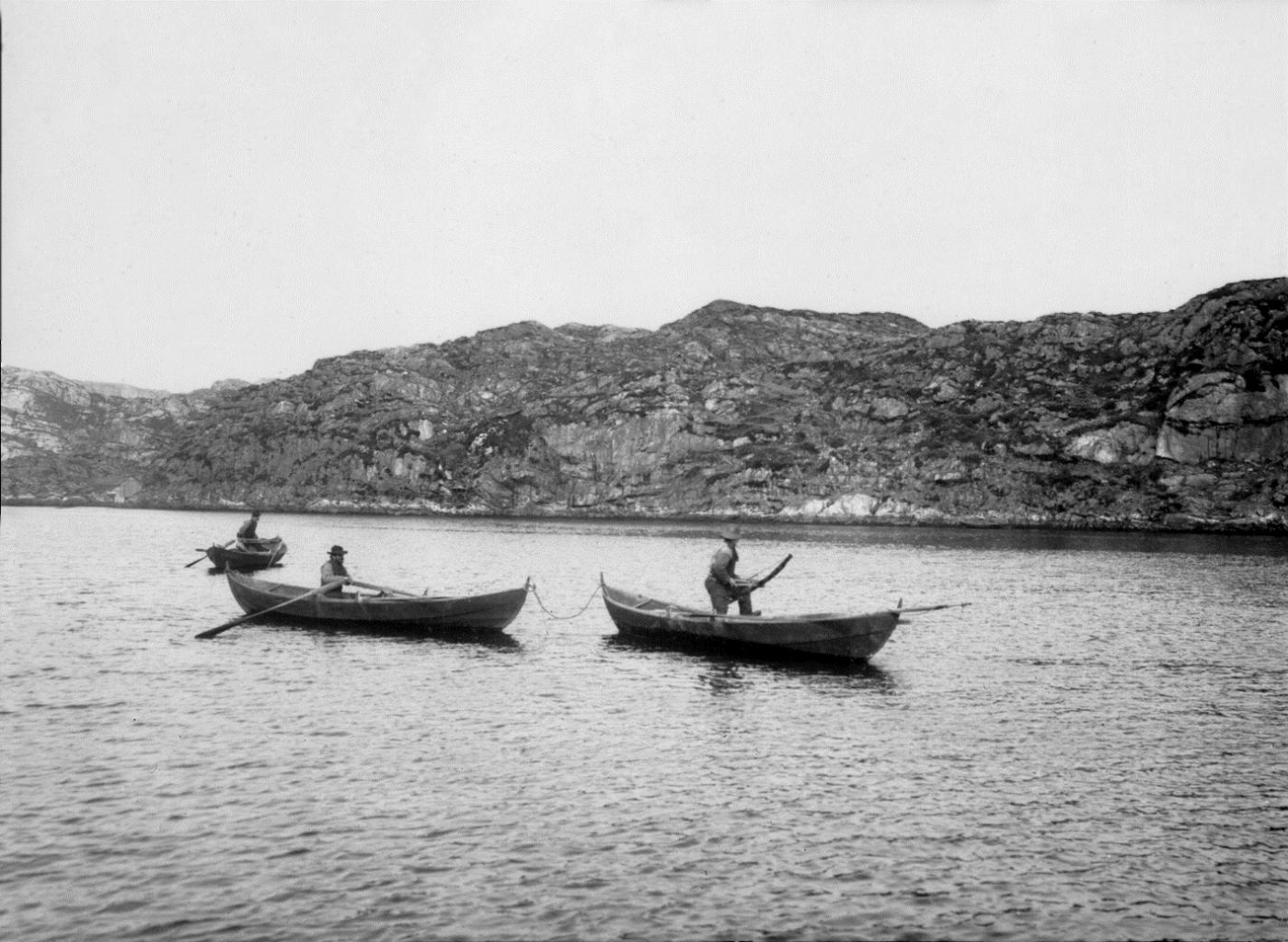The 9-10 metre long minkey whale often came in here, and the shape of the sound was such that it was easy to close it off. The hunting method, and not least the rules for how the whale was to be partitioned, followed ancient traditions. Right up until the former century the whale was shot with bows and arrows, a powerful crossbow made of wood. The arrows were poisoned with infested whale meat and the whale died from blood poisoning. Around 1900 rifles started to be used for shooting whale. When the whale had received the fatal shot, but before it died and sank, they had to insert the skutel (a type of hand harpoon) in it in order to tow it to land. It was now time to partition the whale according to detailed rules. The one who had cried “Whale in the sound” was to have one part, the one responsible for the fatal shot, another, the one keeping guard at the seine, another, and for the rest the meat was divided between the farms according to special rules.
The last minkey whale was taken in Skogsvågen in 1960. A thousand years of whaling had come to an end.




